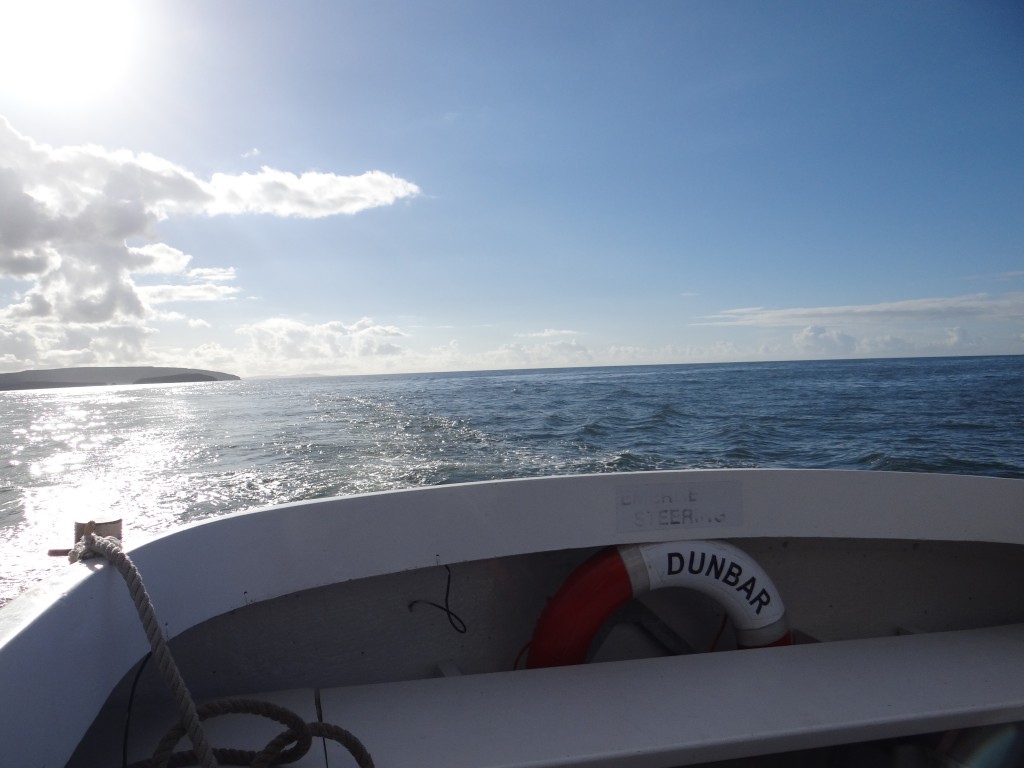I can’t turn my back on the sea. It’s a strange conviction, superstitious almost. Yet every time I finish a land watch, I can still feel the vast open water behind me as I head down the pier for home, and I have to keep turning back. Maybe it’s the fear of missing a sneaky, darting porpoise dorsal, or maybe it is the just the spell of the sea, always pulling me back.
My passion for cetaceans borders on the ridiculous. They swim through my thoughts and dreams constantly and they’re all I want to talk about most of the time! So, volunteering for Sea Watch Foundation is super important to me. After Matt Clough, the Wales Development Officer, showed me the ropes on how to document each land-based observation, I would trot on down to Penarth Pier with my sheet and binoculars, scanning for harbour porpoise. But at under 2 metres long with a small, triangular dorsal fin, they didn’t seem to be too forthcoming. I’m still yet to see a porpoise from the pier but hey, no sightings is still valid data and so the quest continues! However, my efforts were not gone unnoticed and last month Sea Watch invited me out on their home waters to assist in one of their boat surveys. Needless to say, I told everyone I knew with squeals of excitement (there goes any future science cred).
On arriving at New Quay I instantly wished that it was my local land watching spot, and with news that dolphins had been spotted from the pier that very morning I was even more eager. So, three interns, three volunteers (myself included), Matt and the captain all headed out aboard the Dunbar in search of the resident bottlenose dolphins.
Our first sighting, not too long into the survey, was a grey seal, excitedly pointed out by one of the interns as the seal popped up from the waves. During a survey, everyone sticks to an assigned rota, taking shifts on certain roles, working together to cover all aspects of data collection. After a while of scouring the surface, and watching torpedoing gannets, it was my turn to be primary observer. Seated high up on top of the boat, with an amazing view of the surrounding sea, Megan Evans, one of the interns, talked me through how to record any sightings we may have. As I scanned right and Megan scanned left, we were able to cover the area from a vantage point, soon spotting the anticipated sight of dorsal fins. No dolphins this time, just the fleeting presence of three harbour porpoise, typically steering clear of the boat. We recorded the sighting, noting the distance and direction from our vessel, the species, number, and their behaviour.
When you’re not facing the whip of the sea winds as primary observer, there are other tasks to get done. Every fifteen minutes observers must record information, with or without a cetacean sighting. A GPS device keeps tabs on the boat’s speed, latitude and longitude, which all get recorded. Other components of the data sheet include noting the visibility, level of glare, precipitation, sea state and any surrounding boat activity. The conditions were mainly ideal throughout the trip. Although some dark clouds loomed at times, the sea state switched from a calm 2 to a glassy 1, perfect for spotting the cruising dorsal of a dolphin, yet hours in and still no sign! As we watched distant downpours of rain over the town and nearby rainbows forming, our hope was beginning to fade. Heading back to shore, I tried to push aside my disappointment and focus on the invaluable skills I’d learnt, the porpoise sighting and the fact I’d spent hours at sea, my favourite place! But then suddenly, a delighted outburst from the primary observers jumped everyone to attention: ‘DOLPHIN!’ There they were, a small pod with a baby, gliding through the surface of the dusk-lit water. As it was my first ever dolphin sighting I stood in awe, whilst the interns leapt back and forth to each side of the boat, camera in hand to photo-identify the pod. The baby bottlenose surfaced upwards with a mini belly flop as the older dolphins slid effortlessly beside. Some observers got the added treat of witnessing an acrobatic leap into the air by one breaching dolphin (unfortunately the excitement must have dumbfounded me into having my back turned on this moment!). What felt like two exhilarating minutes was actually about twenty-five minutes of cautiously following the pod or the pod approaching us. I couldn’t take my eyes off them, even as we were heading back into New Quay harbour.
It is such a wonderful privilege to have a variety of marine life around the British coasts. I live in a capital city, yet all it takes is a relatively short journey to experience a cetacean treat, one that many people don’t even realise is available! I urge everyone to take full advantage of living on an island and to explore our rich coasts.
Written by Leanne Dixon.
If you would like to follow in Leanne’s footsteps and help survey your local area please contact our Sightings Officer on kathy.james@seawatchfoundation.org.uk, or contact mathew.clough@seawatchfoundation.org.uk if you live in Wales. We are currently also accepting applications for our 2016 internships. Please click here to find out more.
































